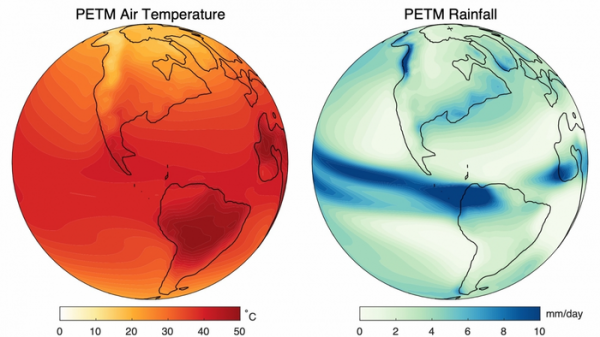About 56 million years ago, volcanoes quickly dumped massive amounts of carbon dioxide into the atmosphere, heating the Earth rapidly.
This time period – called the Paleocene-Eocene Thermal Maximum, or PETM – is often used as a historic parallel for our own future under climate change, since humans have also rapidly poured carbon dioxide into the atmosphere over the last 250 years.
A University of Arizona-led team of researchers published a study in Proceedings of the National Academy of Sciences that includes temperature and rainfall maps of Earth during the PETM to help better understand what conditions were like in that time period and how sensitive the climate was to soaring levels of carbon dioxide.
Read more at: University of Arizona
Reconstructed surface air temperature (left) and rainfall amount (right) during the Paleocene-Eocene Thermal Maximum warming event, 56 million years ago. The maps were created by blending geological data with climate model simulations using a technique called paleoclimate data assimilation. (Photo Credit: Jessica Tierney)


